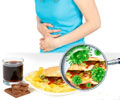Two West Bengal University of Animal and Fishery Sciences alumni, currently associated with Purdue University, have shown that a novel technique can help screen thousands of samples of food or water for several dangerous food-borne pathogens simultaneously.
Arun Bhunia, who is currently a professor of Food Science at Purdue University, says that that new technology can provide test results in one to two hours.He says that the technique, which has potential biosecurity and food safety applications, can also estimate the amount of microbes present and whether they pose an active health risk.
According to him, the new technology may help neutralize potential threats and improve food-processing techniques.
"For food safety and biosecurity purposes, you need a quick test - a first line of defense - to be able to tell if there is something pathogenic in the food or water," Bhunia said.
The researcher says has revealed that his technique utilizes live mammalian cells that release a measurable amount of a signalling chemical when harmed. He says that optical equipment and computer software can analyse the quantity to estimate the amount of harmful microbes present.
"This is very important. With many toxins or pathogens, there is an effective dose or threshold you must pass before you have to worry. By providing information on quantity, this technology gives you a higher degree of confidence in the test and what steps must be taken to alleviate the problem," he said.
Advertisement
It also recognizes several species of Bacillus, a non-fatal but common cause of food poisoning, adds Banerjee who is the first author of the report detailing the technology, published in the journal Laboratory Investigation.
Advertisement
Telling about the advantages of their new technology, Banerjeee said that it could identify actively harmful pathogens but ignore harmless ones. Furthermore, with this technique, an analysis could take place on-site, he said.
Since the technology tests for bacteria and toxins that attack cell membranes, the researchers employed cells with high amounts of alkaline phosphatase, the signalling chemical released upon damage to the cell membrane. Bhunia said that they could conceivably employ other types of cells within this framework to detect additional types of pathogens.
For carrying out tests, the researchers added samples of food and water to biosensor wells before being incubated for one to two hours. To each well a chemical was added that reacted with the biosensor's alkaline phosphatase, yielding a yellow product quantified by a special camera and a computer.
However, a precise calculation may be unnecessary sometimes.
"When a large amount of pathogen is present, you can literally see the colour change taking place before your eyes," Banerjee said.
Researchers are now trying to get these cells to live within the gel beyond four to six days, a current limitation. Bhunia, however, said that the time-span could be expanded to two weeks, the shelf-life he considers to be necessary for the technique to have commercial value.
Source-ANI
SRM/L






